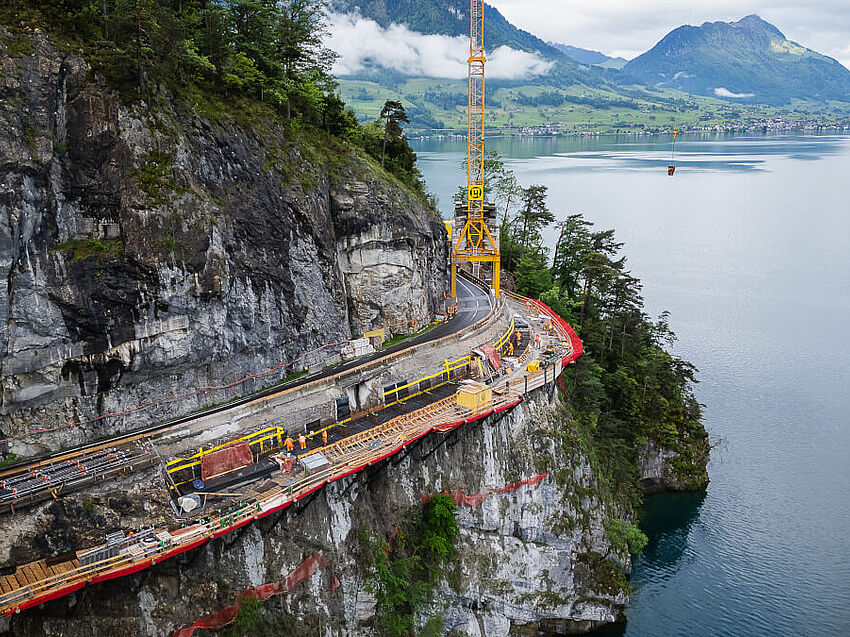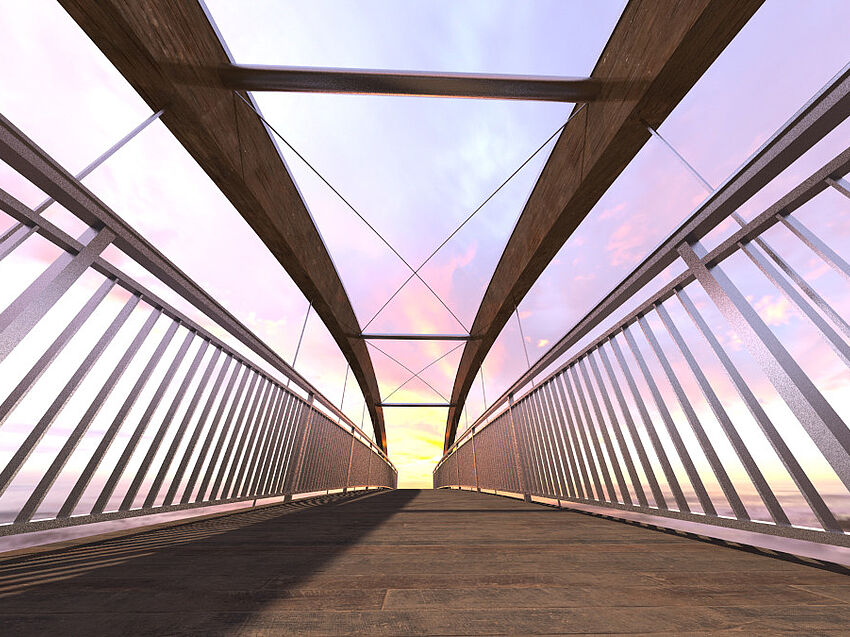BIM in Action: How BPK Mosty is Transforming Infrastructure Design with ALLPLAN
The Drift Bridge in Fort Worth is not only extraordinarily beautiful, but also a successful example of economic plug-and-play urbanism.
Since 2021, the shapely Drift Bridge in Fort Worth, Texas, has graced – and run across – West Creek. At the point it now spans, there was traditionally no overpass and thus no way across the not-so-narrow creek for a length of seven apartment blocks. The fact that this has now changed may also have something to do with the way it was designed and built by architect Volkan Alkanoglu.
The 19-meter pedestrian bridge borrows from shipbuilding with a steel-reinforced substructure clad in CNC-cut and turn-milled wood planks. Installation on site took just a few hours thanks to prefabrication. Volkan Alkanoglu calls the interplay of prefabrication and rapid installation “plug-and-play urbanism” and an economical method for erecting medium-sized infrastructure structures – assuming accurate digital planning.
Incidentally, the name of the small wood-steel hybrid bridge comes from its design concept, which in turn is based on the driftwood that accumulates in the bed of West Creek depending on seasonal water levels. Another source of inspiration was the surrounding ranch-style homes as well as Eamesian leg braces. In keeping with the design of the latter post-war plywood invention in which all functions are housed in a single form, the Drift Bridge also incorporates the roadway, seating, and railings as one structure, so to speak.




